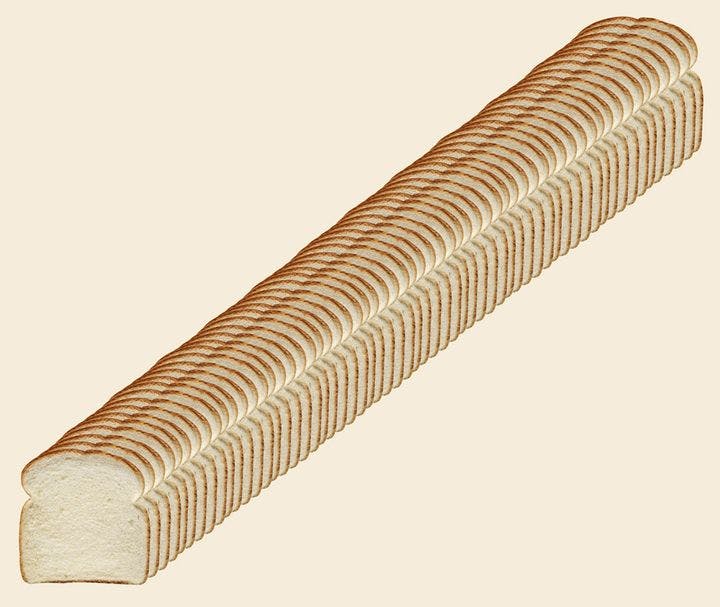Spring 2012
The Brief, Wondrous History of White Bread
– The Wilson Quarterly
Industrially produced white bread emerged from a confluence of political and social needs unique to the mid-20th century.
Your average loaf of sliced white bread may not inspire much wonder, but its unassuming character masks an intriguing provenance. According to political scientist Aaron Bobrow-Strain of Whitman College, industrially produced white bread emerged from a confluence of political and social needs unique to the mid-20th century.
At the beginning of the 1900s, an unprecedented surge of immigrants was landing on American shores. Industrial food products, with their predictable shapes, standardized ingredients, and hygienic assurances, enjoyed rising sales, thanks in part to Americans’ desire to avoid what was then perceived as racial contamination. As World War II approached, the federal government scrambled to think of ways to fortify a populace weakened by the skimpy diets of the Great Depression. Of the first million men screened by draft boards in 1940, at least 13 percent were rejected for reasons relating to malnutrition. It dawned on the government to spike the most ubiquitous items in American pantries with vitamins. Thiamin, niacin, iron, and eventually riboflavin became banner ingredients of enriched bread.
But how to ensure that the public would appreciate this new nutritional jewel? Bread had to be perfected for the American palate. In 1952, the U.S. Department of Agriculture joined forces with baking industry scientists to inaugurate the “Manhattan Project of bread,” as Bobrow-Strain calls it. Its objectives were not only to ascertain Americans’ ideal of white bread but also to establish a process by which large volumes could be produced quickly. Beginning in 1954, researchers scrutinized the bread-eating habits of 600 American families in Rockford, Illinois, and subjected these consumers to countless taste tests. (The subjects, it turned out, favored extremely fluffy bread, perhaps because fluffiness had once been a signal of freshness. Arguably less surprising is that their preference was 250 percent sweeter than the then-average loaf.)
On the production side, chemists developed a way for yeast to ferment independently of the baking process, whittling down the time bakers needed to wait for the bread to rise. Scientists also perfected a formula to toughen gluten strands to “stand up to the traumas” of modern processing. “Four years and almost one hundred thousand slices of bread” later, the prototypical loaf of enriched white bread was born.
The project certainly achieved its goal. By the early 1960s, each American was eating an average of a pound and a half of white bread per week and getting 25 to 30 percent of his or her necessary calories from it. Consumption may not be as great today, but bread remains a fundamental conduit of governmentally mandated nutrients—and a staple of American diets.
THE SOURCE: “Atomic Bread Baking at Home” by Aaron Bobrow-Strain, The Believer, Feb. 2012.
Image courtesy of Wikimedia Commons
